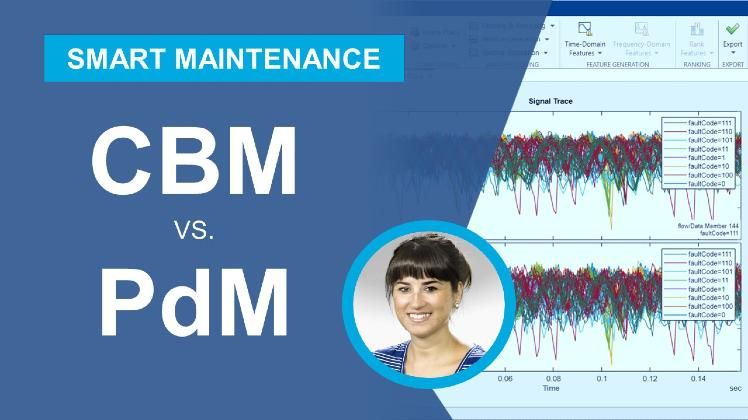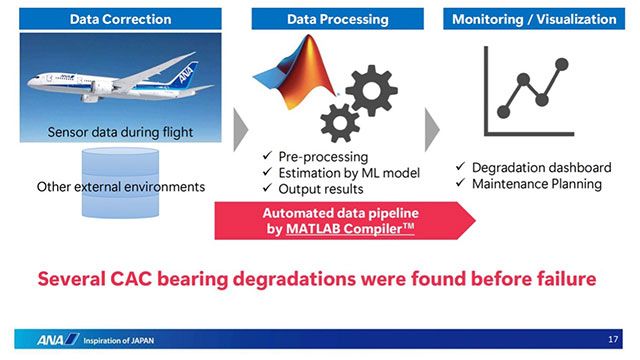Prognostics and health management (PHM) is an approach to machine maintenance that uses real-time and historical sensor data to inform and optimize maintenance decisions.
Prognostics and health management is an integrated approach that combines two key concepts:
- Prognostics refers to an approach to designing algorithms to estimate the remaining useful life of systems or components. The term is often used interchangeably with predictive maintenance.
- Health management is a comprehensive maintenance approach that applies the insights from prognostics and diagnostics algorithms, among others, to ensure system health and reliability.
Why Prognostics and Health Management Is Important
Prognostics and health management enables equipment operators and manufacturers to:
- Reduce equipment downtime: PHM algorithms can help detect equipment anomalies, determine the root cause of faults and failures, and predict potential problems before they occur.
- Optimize maintenance schedules: By scheduling maintenance service only when necessary, PHM helps avoid unnecessary maintenance costs.
- Enhance operational efficiency: PHM helps identify and mitigate the risks of equipment failure, extending equipment lifespan and improving overall productivity.
Prognostics vs. Diagnostics
To understand the full scope of PHM, it’s important to differentiate between two approaches that are often used in parallel but serve distinct purposes: prognostics and diagnostics. Although the word diagnostics is not directly mentioned in the term prognostics and health management, it is often a key approach to PHM success.
Diagnostics focuses on identifying, isolating, and determining the causes of faults or failures that have already occurred within a system. It answers the question, “What went wrong?” Diagnostics is a component of condition-based maintenance (CBM) programs, which are a PHM strategy based on monitoring the current health state of equipment.
Prognostics, on the other hand, is forward looking. It involves predicting the time at which a system or component will no longer perform its intended function. This prediction, known as the remaining useful life (RUL), enables preemptive maintenance to prevent failure. Prognostics require a more advanced understanding of the machine’s behavior but have a greater impact on reducing unplanned downtime and maintenance costs. Prognostics answers the question, “When will it go wrong?”
By combining diagnostics and prognostics, PHM provides a comprehensive view of machine health, enabling more informed decision-making regarding maintenance and operations.
Condition-Based Maintenance vs. Predictive Maintenance
Condition-based maintenance (CBM) is a maintenance strategy based on the current health state of the equipment. Learn how CBM works and how it differs from predictive maintenance.
Health Management
Health management within the context of PHM refers to the strategies to maintain or improve the health and reliability of operational systems. This approach integrates a variety of activities, including monitoring, diagnostics, prognostics, maintenance planning, and executing corrective actions to address current and potential issues. Health management is a holistic approach to ensuring that systems function efficiently and effectively throughout their life cycles, using data to inform decisions on maintenance and operational practices.
Effective health management relies on a continuous cycle of monitoring, analysis, and action. This begins with real-time monitoring of sensor data from operational equipment. The collected data is then analyzed using both diagnostics to understand current health states and prognostics to predict future states. Based on this analysis, decisions can be made regarding the most appropriate maintenance actions—whether preventive, corrective, or predictive.
Prognostics Algorithm Development with MATLAB
Prognostics algorithms are the goal of predictive maintenance programs. To develop prognostics algorithms, you need to start with data from your machine or fleet of machines. This data needs to represent both healthy and degraded states. There are several approaches to prognostics algorithm development in MATLAB® using tools like remaining useful life algorithms in Predictive Maintenance Toolbox™.
Data for Prognostics and Health Management
Data for developing prognostics algorithms—such as from temperature, pressure, voltage, noise, or vibration measurements collected over time—typically comes from machine sensors; however, since scheduled maintenance programs are often conservative, failure data for prognostics can be difficult to acquire. Sensor data can be augmented with failure data generated from physics-based models, which are tuned to match the machine parameters.
Designing Condition Indicators
Machine data for prognostics is processed using various statistical and signal processing techniques to extract important features called condition indicators. Condition indicators are features that change predictably as the machine degrades. These can be any feature useful for distinguishing between healthy and faulty operations. In the case of prognostics, condition indicators are sometimes called health indicators and are used as inputs to train prognostics models.
All Nippon Airways Uses MATLAB to Predict Aircraft Component Failures
All Nippon Airways uses MATLAB to train machine learning models, which are deployed to a data pipeline to evaluate real-time sensor data.
Types of Prognostics Algorithms
There are several approaches to designing prognostics algorithms based on the data and knowledge available. Engineers might use historical data to design data-driven prognostics algorithms, domain expertise to create physics-based models, or a combination of both. The result is a prognostics algorithm that can predict when the next failure event is likely to occur.
Data-Driven Algorithms
Regression models are a type of machine learning algorithm often used for basic prognostics. Regression models describe the relationship between an output variable (such as failure time) and one or more input variables (condition indicators). This approach can be useful when the goal is to statically predict the life of an asset, such as a battery based on its current state.

Results of a simple regression model for prognostics, predicting the cycle life of a battery. (See MATLAB code example.)
However, in many prognostics applications, the goal is to accurately predict the time to failure of a particular asset based on its operating history. For that, we turn to remaining useful life algorithms.
Remaining useful life (RUL) models are specialized algorithms for prognostics, such as similarity, degradation, or survival models. Which model is used depends on the amount of historical data available. These models require feature engineering to design a representative condition indicator. They can provide continuously updated prognostics within a defined confidence interval as more data is acquired.
RUL estimation for bearing prognostics using a degradation model in MATLAB. (See MATLAB code example.)
RUL estimation for bearing prognostics using a degradation model in MATLAB. (See MATLAB code example.)
Deep learning models are particularly adept at automatically learning complex patterns and extracting features from large volumes of data. Deep learning approaches to prognostics, such as long short-term memory networks (LSTMs) and convolutional neural networks (CNNs), can work with raw data and thus do not require the domain expertise to design accurate condition indicators and features. However, deep learning models require substantial amounts of data and computational resources and may lack the explainability needed for a safety-critical setting.
Keep Exploring This Topic
Physics-Based Models
Physics-based models, such as those built in Simulink® and Simscape®, can be used for prognostics by simulating the behavior of a machine over time. You can validate and calibrate these models using sensor data from the real machine and then use them to simulate future behavior for prognostics under different operating conditions. Using these models for prognostics requires detailed knowledge of machine design and how components degrade with time.

Physics-based model of a faultable pump for prognostics built in Simscape. (See Simulink model.)
Hybrid Algorithms
State estimators and identified models are hybrid algorithms that combine knowledge of the system’s physics with operational data. When creating an identified dynamic model that describes machine behavior, such as a state-space model or autoregressive model, you can use that model for prognostics by propagating the model forward in time and analyzing the behavior of a known condition indicator. Similarly, you can use state estimators, such as Kalman filters, for prognostics and predict future states when failure will occur.
Additionally, data-driven and physics-based methods can often be combined to form a robust prognostics approach that uses both operational data and deep domain expertise. For example, combining custom domain-specific features with standard feature engineering techniques can improve the accuracy of AI models. Analyzing the sources of knowledge you have about the systems and components in question increases the reliability of your PHM approach.
Deployment and Operation
PHM algorithms are not useful until they are deployed in a real-world operational environment. There are several approaches to operationalizing prognostics algorithms, depending on the requirements.
Algorithms may be deployed in an IT environment such as an on-premises server or a cloud platform. Cloud deployments can adjust quickly to varying computational and storage needs on demand. This is particularly useful for handling large volumes of data and complex analytics across multiple sites or large fleets of equipment. On-premises deployments, while requiring more up-front investment in infrastructure, provide enhanced control over data security and system performance, which is crucial for applications in sensitive or highly regulated industries.
Alternatively, prognostics algorithms can be implemented in an embedded system directly on the equipment. This approach enables real-time monitoring and decision-making, drastically reducing the latency associated with data transmission to a centralized system for analysis. By processing data locally, embedded systems can also significantly decrease the volume of data that needs to be transmitted over the network, alleviating bandwidth constraints and reducing potential points of failure. This is particularly helpful in scenarios where immediate action is required based on prognostics insights, such as in autonomous vehicles or critical manufacturing processes.
Regardless of the deployment strategy, the operation of prognostics algorithms must involve continuous monitoring and maintenance to ensure they remain effective over time. This includes updates to the algorithm to reflect new failure modes or changes in operational conditions, as well as monitoring and drift detection to ensure continued accuracy of the algorithms. Effective operation of prognostics algorithms requires a well-planned strategy for ongoing support and maintenance, ensuring that they continue to deliver value throughout their life cycles.
Related Topics
Explore similar topic areas commonly used with MATLAB and Simulink products.
Select a Web Site
Choose a web site to get translated content where available and see local events and offers. Based on your location, we recommend that you select: .
You can also select a web site from the following list
How to Get Best Site Performance
Select the China site (in Chinese or English) for best site performance. Other MathWorks country sites are not optimized for visits from your location.
Americas
- América Latina (Español)
- Canada (English)
- United States (English)
Europe
- Belgium (English)
- Denmark (English)
- Deutschland (Deutsch)
- España (Español)
- Finland (English)
- France (Français)
- Ireland (English)
- Italia (Italiano)
- Luxembourg (English)
- Netherlands (English)
- Norway (English)
- Österreich (Deutsch)
- Portugal (English)
- Sweden (English)
- Switzerland
- United Kingdom (English)


